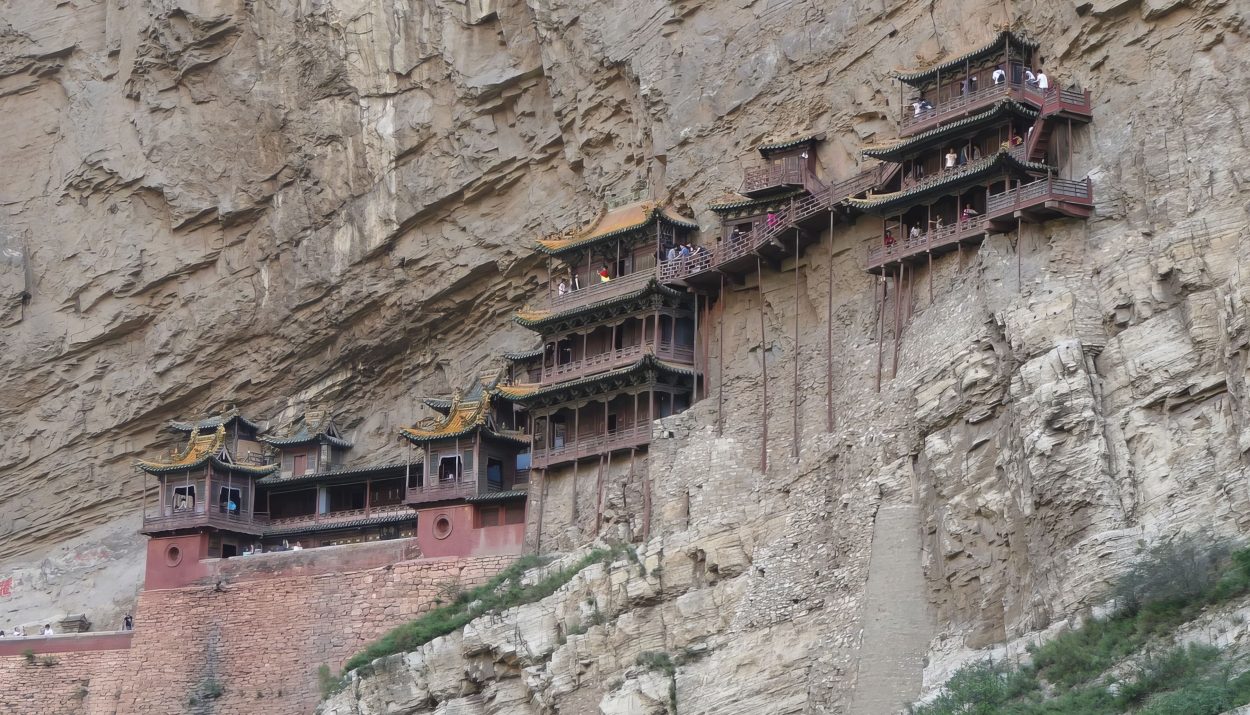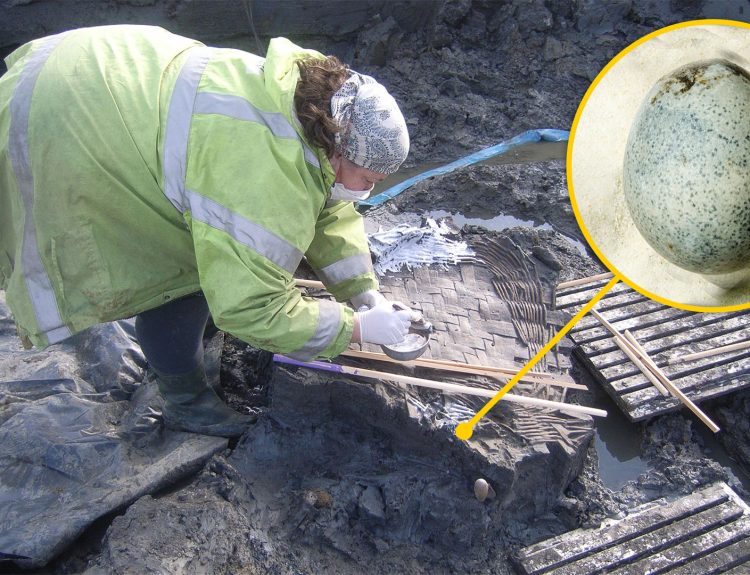Hengshan Hanging Temple, known simply as the Hanging Monastery, has been clinging tightly to a cliff face for more than 1,500 years. The impressive, albeit scary, temple, which dangles more than 260 feet above the ground, has an equally fascinating and inspiring history. While it may not be as well-known as other marvels of engineering of the past, like the Great Wall of China, Notre Dame Cathedral, or the Great Pyramid of Giza, the Hanging Monastery is not only a mind-boggling construction feat but is a one-of-a-kind example of religious tolerance. And it all started with one man, one determined and sure-footed man who wasn’t afraid to look down.
The Hanging Temple Was Constructed During a Time of Religious Upheaval
According to stories and legends, the Hengshan Hanging Temple was initially built by one man. Liao Ran, a Taoist monk, started the ambition and gravity-defying construction project in the year 491 CE, during the Northern Wei Dynasty. This was a tumultuous time in Chinese history. The plan was to unify China, but it was a rocky road to reach this goal.
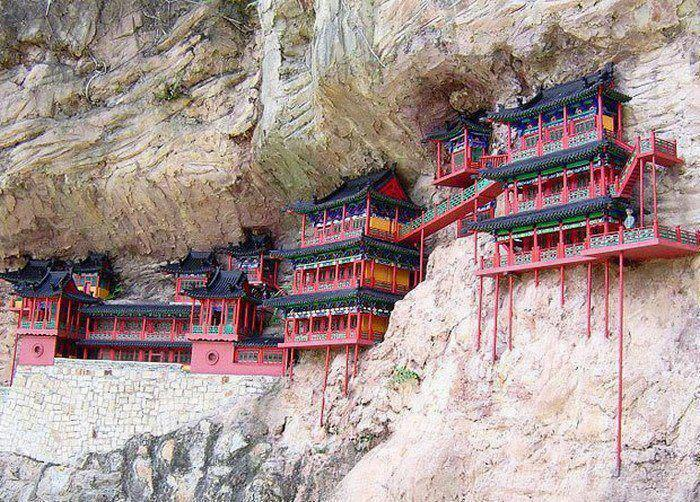
Northern China was, at the time, predominantly Buddhist. The unification process had a profound impact on the religious and philosophical ideologies of the region as both Taoist and Confucian beliefs crept into the north. The different religions may have put followers at odds with each other, however Taoist and Buddhist beliefs are quite similar and Confucianism focused more on society than individuals.
A Man on a Mission
When Liao Ran decided to build a Taoist monastery, he followed the standard preference for selecting a location. Most monasteries were built in secluded spots and were isolated from the noise and busyness of urban cities. Monks at Taoist monasteries sought quiet settings that were close to nature where they could practice peaceful meditation. You could say they advocated for social distancing before it became the buzzword. Liao Ran took this idea up a notch … literally!
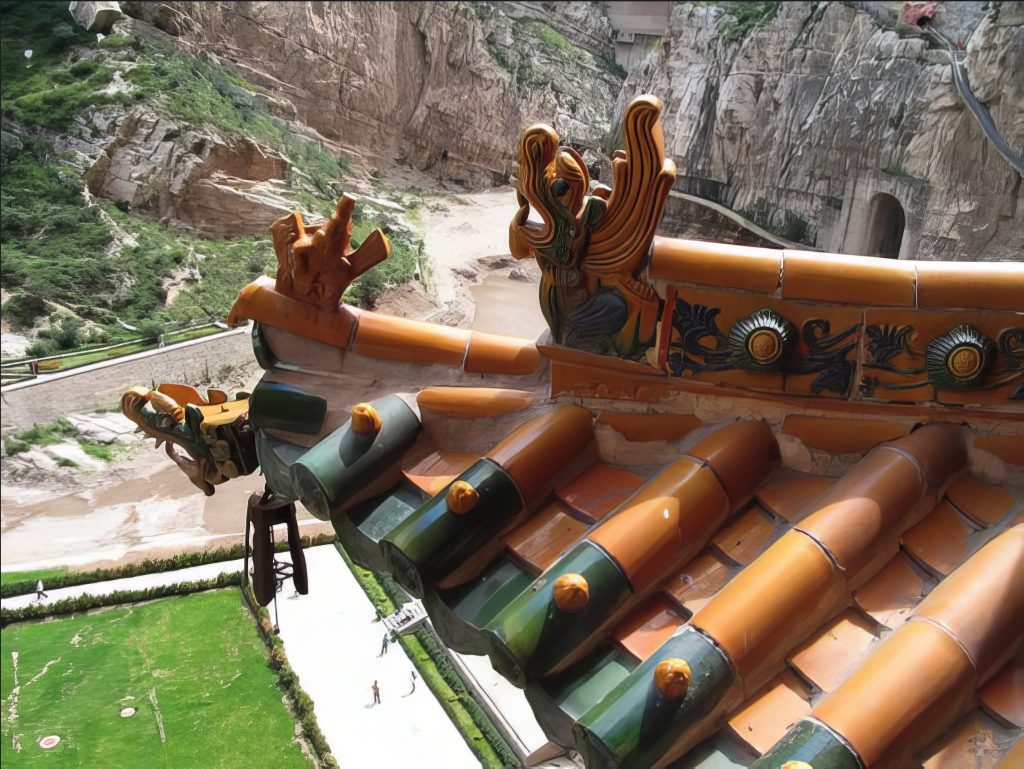
Hengshan Mountain has twin peaks, named Tianfeng and Cuiping, with a deep gorge between them. On the side of Cuiping Peak, there is a steep cliff face with a level ledge. That ledge, Liao Ran thought, would be an ideal foundation for his monastery. The only problem was that it is 246 feet above the ground. Liao Ran didn’t see this as a problem, however. He saw it as a solution.
Why Build a Temple on a Cliff Ledge?
The Native American cliff dwellings in the American Southwest were constructed on the sides of treacherous cliffs to keep the residents safe from marauding enemies. However, that does not appear to be the reason why Liao Ran chose his lofty building site. And the elevated location was not intended to put the monks in closer proximity to the heavens. Instead, he had a more practical reason.
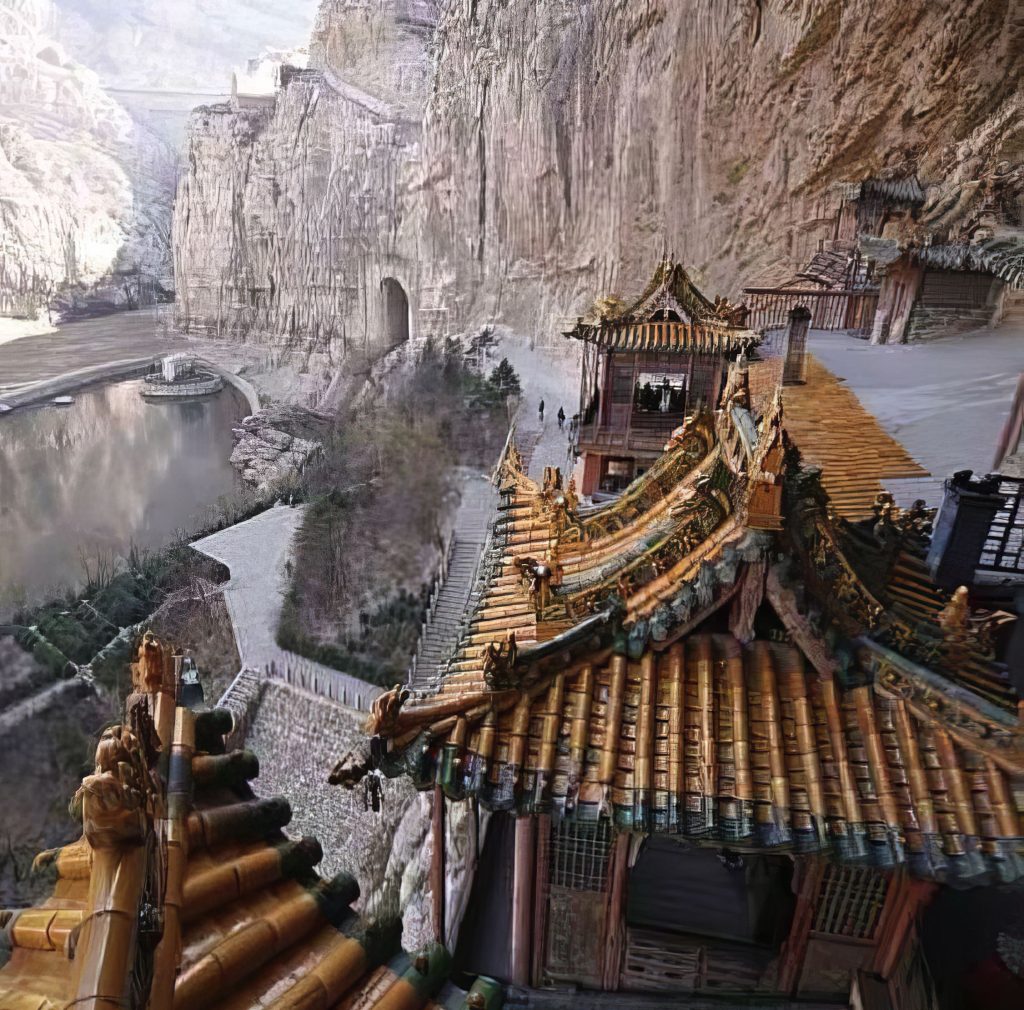
On its soaring perch, the Hengshan Hanging Temple would not be subject to the whims of seasonal flooding that impacted the valley below. In addition, the cliff ledge has a natural overhang that protects the monastery from wind and rain, as well as erosion. Lastly, the view from the side of Cuiping Peak, which faces Tianfeng Peak, is quite breathtaking and spectacular. It is a perfect place for quiet meditation.
Construction of the Temple Was a Logistical Nightmare
As the stories tell us, Liao Ran built the original Hanging Monastery all by himself. But how? Unfortunately, he did not leave a written record to help answer this question, but historians have been able to speculate. His first task would have been to forge a path to the construction site. The zig-zagging route he blazed is used today. In Liao Ran’s day however, it would have included a narrow wooden walkway suspended on the side of the cliff.
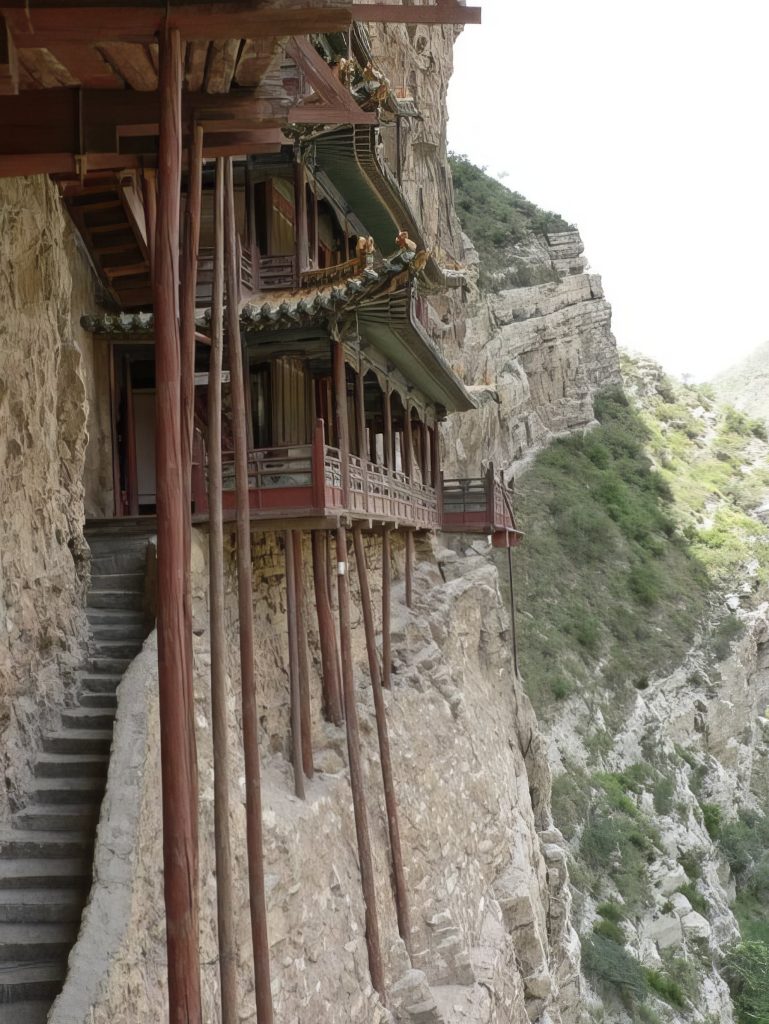
The Hanging Monastery was built entirely of wood. That means Liao Ran had to carry or drag logs from the valley below up the cliff face… a physically demanding and daunting job. Liao Ran drilled holes in the rock and set wooden poles into the side of the cliff. Those same wooden poles held the temple in place for centuries.
A Gravity-Defying Temple
The holes that Liao Ran chiseled into the rugged cliff ledge were deep enough to give the structure stability. The wooden beams were inserted into holes that were up to 10 feet deep. Once the support beams were in place, Liao Ran built a horizontal platform. The temple’s pavilions were constructed on top of this platform.
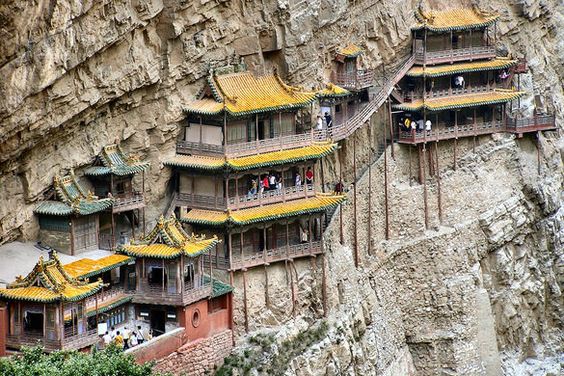
The Hanging Monastery was remarkably well-built and stable, and it remained so for centuries. Throughout the years, the original structure was added on to and expanded. Initially, the monastery did not need vertical pillars to hold it up. In more recent years however, pillars have been added to help preserve the structure and for the safety of visitors.
An Awe-Inspiring Multi-Room, Multi-Story Structure
The Hengshan Hanging Temple is not a tiny building. On the contrary, it is a 40-room structure that is three stories high in places and contains a maze of passageways. There are two soaring pavilions linked together by a 30-foot-long bridge. A third pavilion sits atop the bridge and houses a collection of statues.
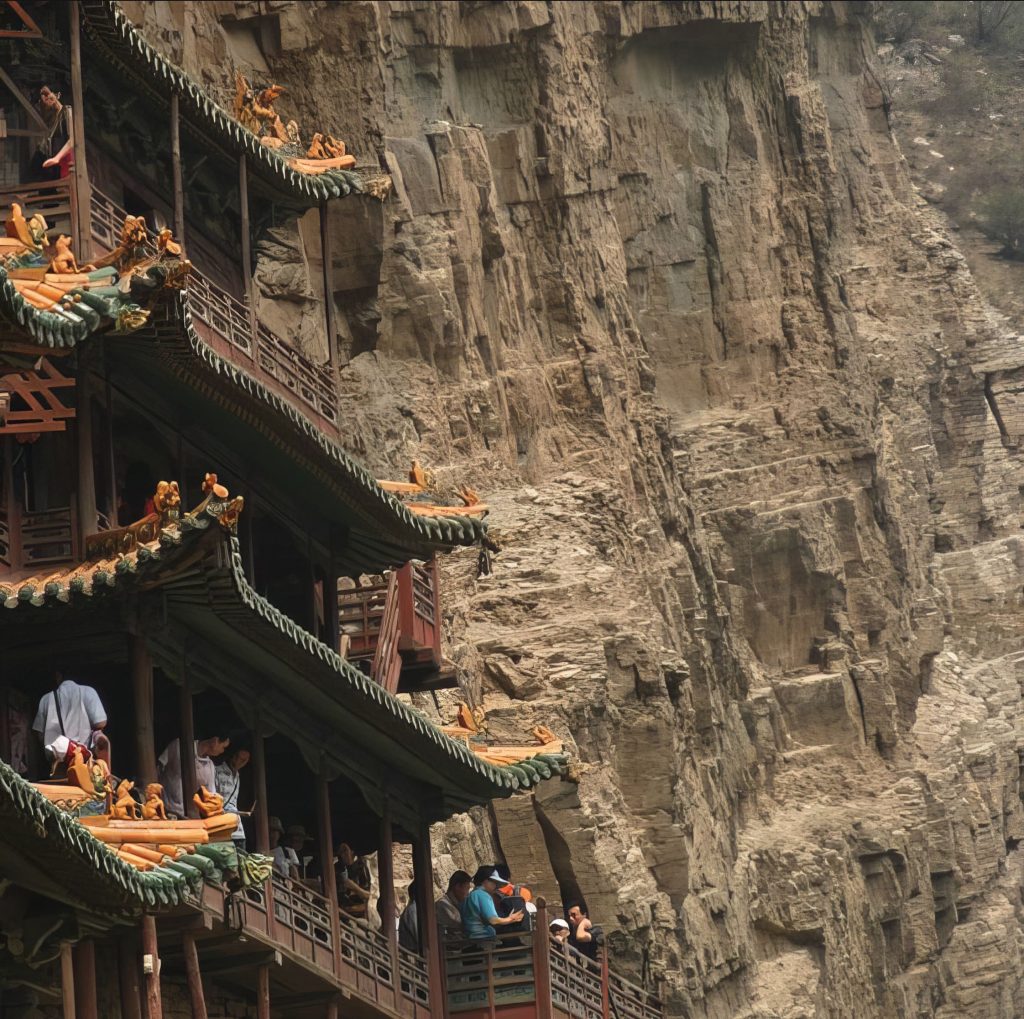
The three-story-tall South Pavilion measures 26-feet long and 13-feet wide. It is home to both the Hanging Temple’s largest room and its tallest sculptures. The North Pavilion, which is also three-stories in height, is 13 feet wide as well. At 23-feet long, it is half the length of the South Pavilion.
An Ongoing Fixer-Upper Project
Since the completion of the Hengshan Hanging Temple roughly 1,500 years ago, the structure has seen numerous repairs and additions. In fact, renovations and repairs on the unique building have been ongoing. Although it was well-built and well-designed, there are unique challenges to keeping up a structure built on a narrow ledge on a steep cliff. It is not like your basic home maintenance.
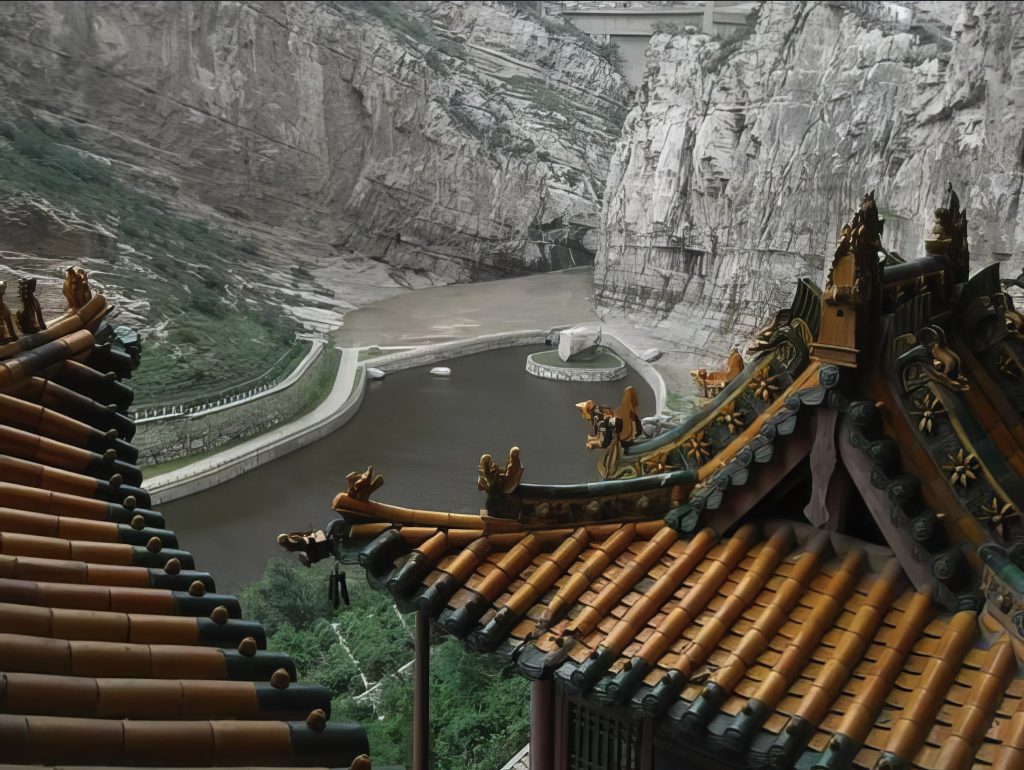
One of the more obvious additions to the monastery was the wooden support beams that were erected at the edges of the pavilions to help support the weight of the roofs. Additional supports were added in modern times to shore up the building, maintain its structural integrity, and preserve the important site for future generations.
A Haven for Travelers
In the Taoist belief system, temples and monasteries were more than simply places of worship. They were also locations where Taoist practitioners could go to find peace and serenity … to rid themselves of the hardships of life. Then and now, Taoists often visit these temples and monasteries to seek inner peace, find solitude, and escape the pressures of the world. In the case of the Hanging Monastery, it attracted additional visitors.
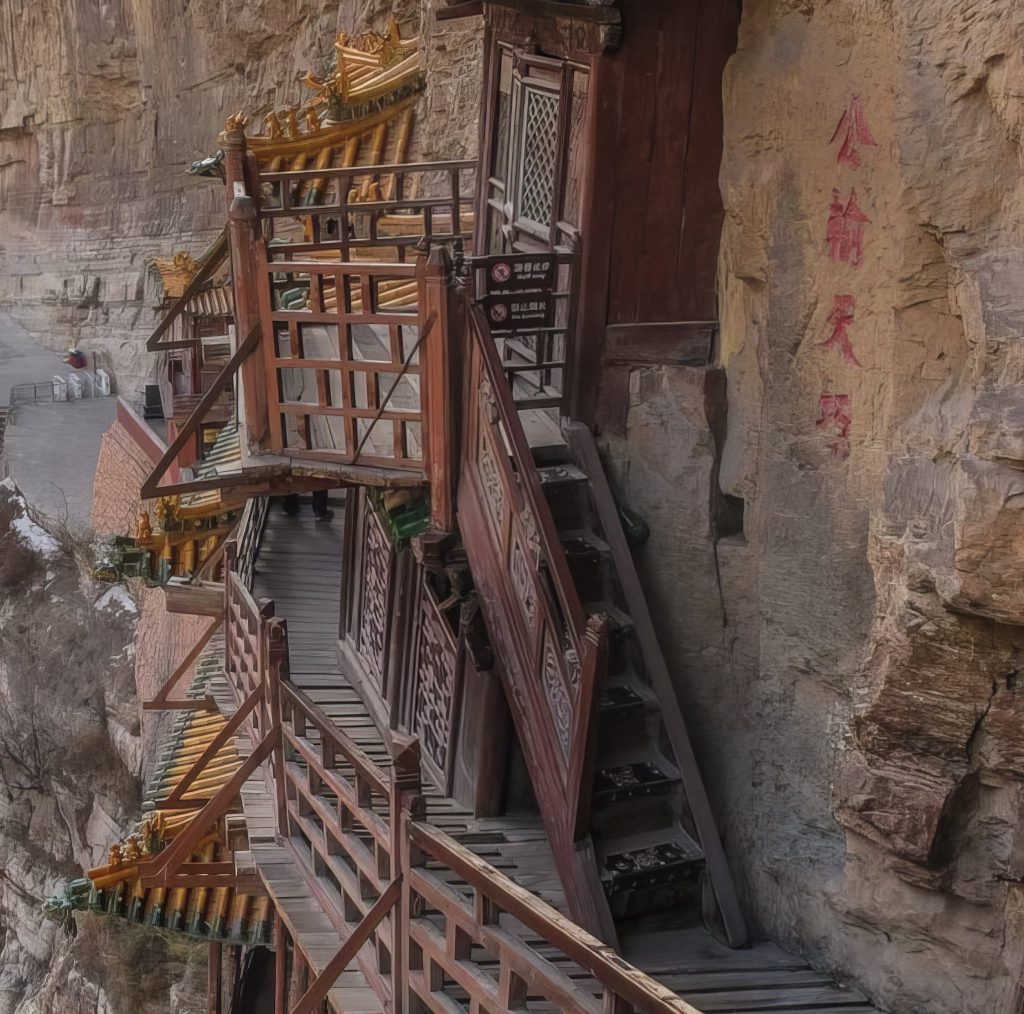
Because the Hengshan Hanging Temple was located far from any city, it was also used as a resting place or lodge for travelers passing through the region. Early in the monastery’s history, religious differences were still a tricky subject. Travelers hesitated to stop at places where hosts worshiped a different faith. The Hanging Monastery earned a reputation for enshrining all three of China’s major religions.
One Monastery, Three Religions
Because the monks at the Hanging Monastery wanted to be accommodating to travelers of all three of the main religions of China, they erected shrines and sculptures for Buddhists and Confucianists, as well as Taoists. A prominent feature at the temple is a trio of sculptures depicting Laozi, Confucius, and Shakyamuni, the founders of Taoism, Confucianism, and Buddhism.
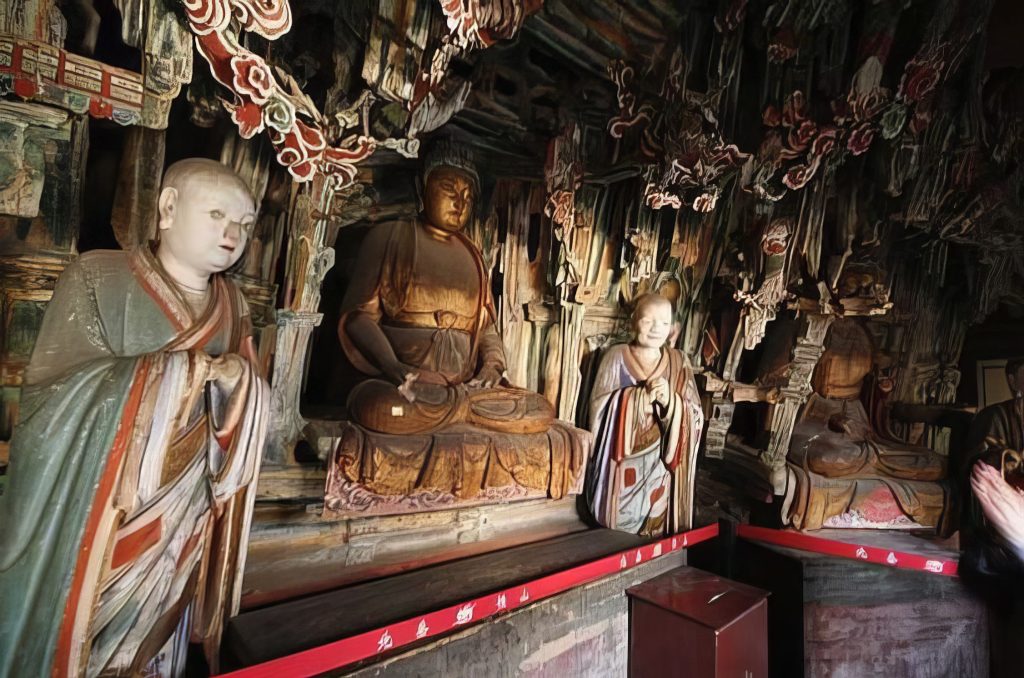
Hengshan Hanging Temple is the only monastery enshrining these three Chinese religions. At the temple, visitors can see one of the finest, most diverse collections of religious statues in the country. There are 80 statues in total. Some are made of stone or terracotta clay while others are cast in iron or bronze. All stand as a testament to the temple’s religious tolerance.
Laozi, the Founder of Taoism
Laozi was an ancient Chinese philosopher and the legendary figure attributed to the authorship of the foundational Taoist text, the Tao Te Ching. Believed to have lived during the 6th century BCE – though historical details about his life remain elusive and shrouded in myth – Laozi is revered as the founder of Taoism, a philosophical and spiritual tradition centered around the concept of the Tao, or the Way.
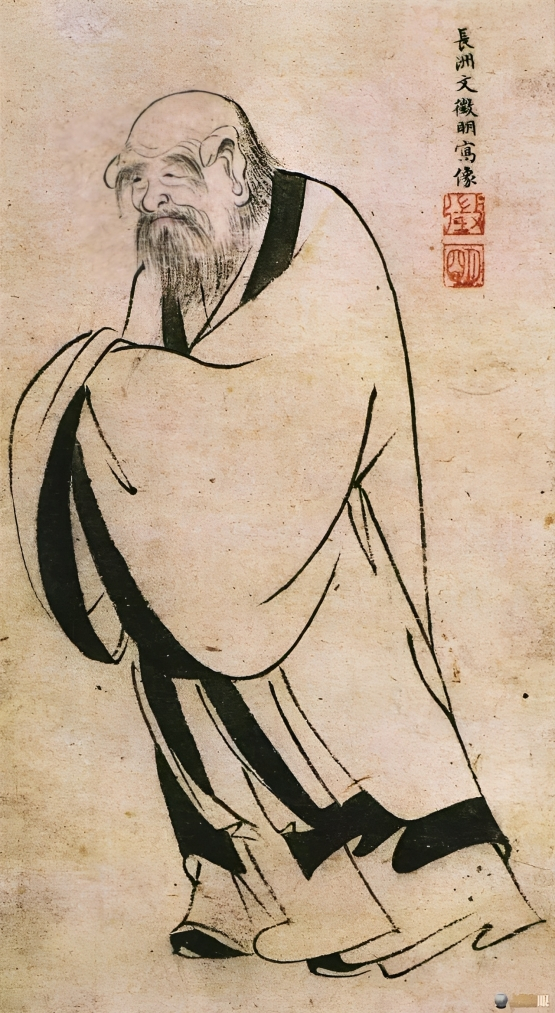
Laozi advocated for a laissez-faire approach to governance and life, promoting the idea that one should align with the natural flow of the universe, rather than resisting it. His teachings have left an enduring impact on Chinese philosophy, influencing not only Taoism but also aspects of Confucianism and Buddhism that followed.
Confucius, the Founder of Confucianism
Confucius was an influential philosopher and teacher whose ideas have profoundly shaped Chinese culture and philosophy. Born in 551 BCE, Confucius devoted his life to imparting ethical and moral guidance. His teachings emphasized the cultivation of virtues such as benevolence, righteousness, and filial piety, forming the core principles of Confucianism. The Analects, a collection of his sayings and ideas compiled by his disciples, serves as a primary source for understanding Confucius’s philosophy.

Confucius believed in the transformative power of education and moral self-cultivation as means to foster social harmony and good governance. While his ideas did not have widespread acceptance during his lifetime, Confucius’s teachings became foundational to Chinese thought, influencing government policies, social structures, and educational systems. A guiding force in Chinese cultures, Confucianism emphasizing the importance of ethical conduct, family values, and social harmony.
Shakyamuni, the Founder of Buddhism
Shakyamuni, also known as Siddhartha Gautama, was a historical figure who became the Buddha, the enlightened one, and the central figure in Buddhism. Born in present-day Nepal, around the 5th century BCE, Shakyamuni’s early life was one of luxury. However, he renounced his princely life in search of the truth about human suffering. After years of ascetic practices and meditation, he attained enlightenment under the Bodhi tree in Bodh Gaya, India.
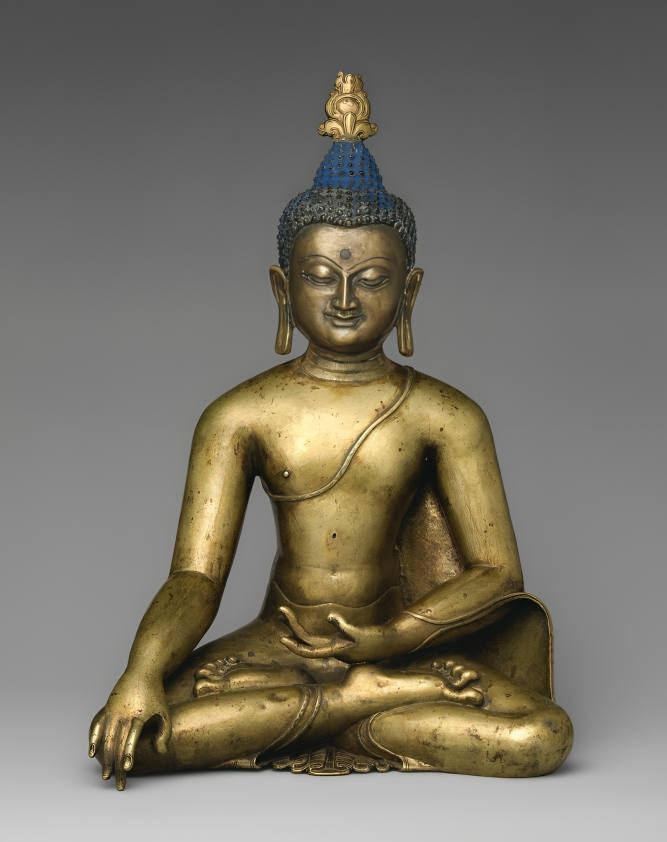
Shakyamuni then spent the rest of his life teaching the Four Noble Truths and the Eightfold Path, foundational principles of Buddhism aimed at alleviating suffering and achieving liberation from the cycle of birth and death. His teachings, known as the Dharma, emphasized compassion, mindfulness, and the cultivation of wisdom. Shakyamuni’s profound insights into the nature of existence and the path to liberation have led Buddhism to become one of the world’s biggest religion with millions of followers across the globe.
Still Welcoming Guests After 1,500 Years
The gravity-defying Hanging Temple, which was named one of the Top Ten Most Unique Precipitous Architectural Sites by Time magazine, is still open to visitors after 1,500 years. The site is open year-round, however the weather in Northern China can be quite frigid in the wintertime. Temperatures are more welcoming between April and October.
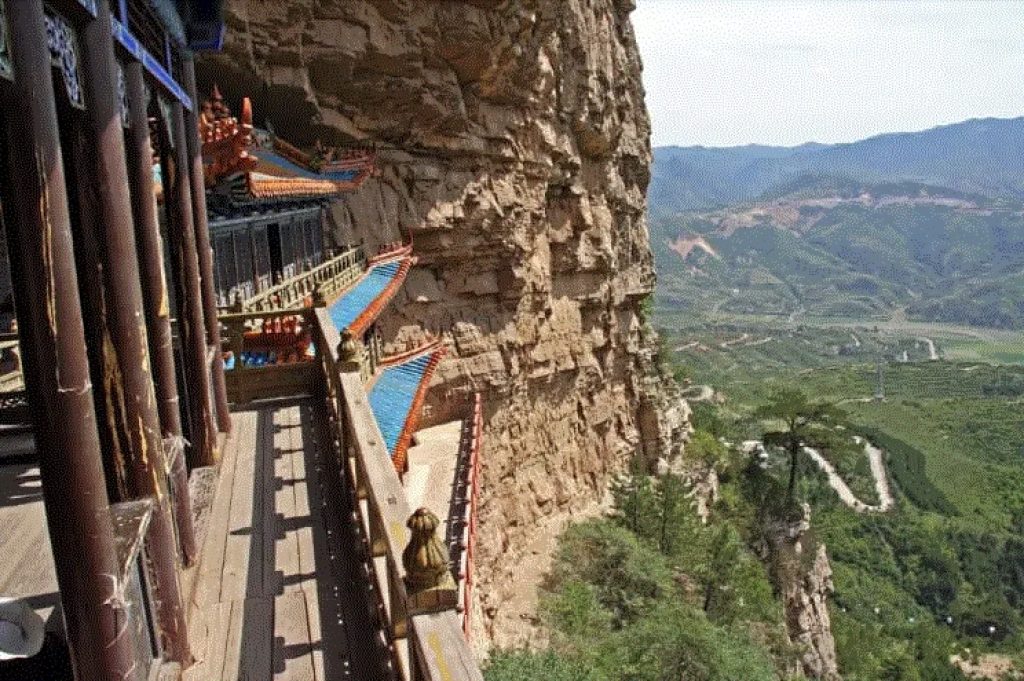
For safety reasons and to protect the aging temple, only 80 guests at a time are allowed in the monastery. Visitors may have long waits during peak travel season, so it is recommended that guests arrive as early as possible.
Getting to the Hanging Temple Is Not For the Faint of Heart
Most tourists visiting the Hanging Temple arrive as part of a group tour that includes other attractions in the region. The closest city is Datong City, which is an hour and a half away by car. There is an airport in Datong City with flights arriving from 25 Chinese cities, or travelers can take the bullet train from Beijing.

Once in Datong City, visitors can rent a car or get a taxi to take them to the Hanging Temple. To reach the actual monastery, guests will take the same foot path that Liao Ran used 1,500 years ago. They will follow a zig-zagging route made of wooden planks clinging to the rocky cliff face suspended high above the deep ravine below. It is not a trek for the faint of heart.

